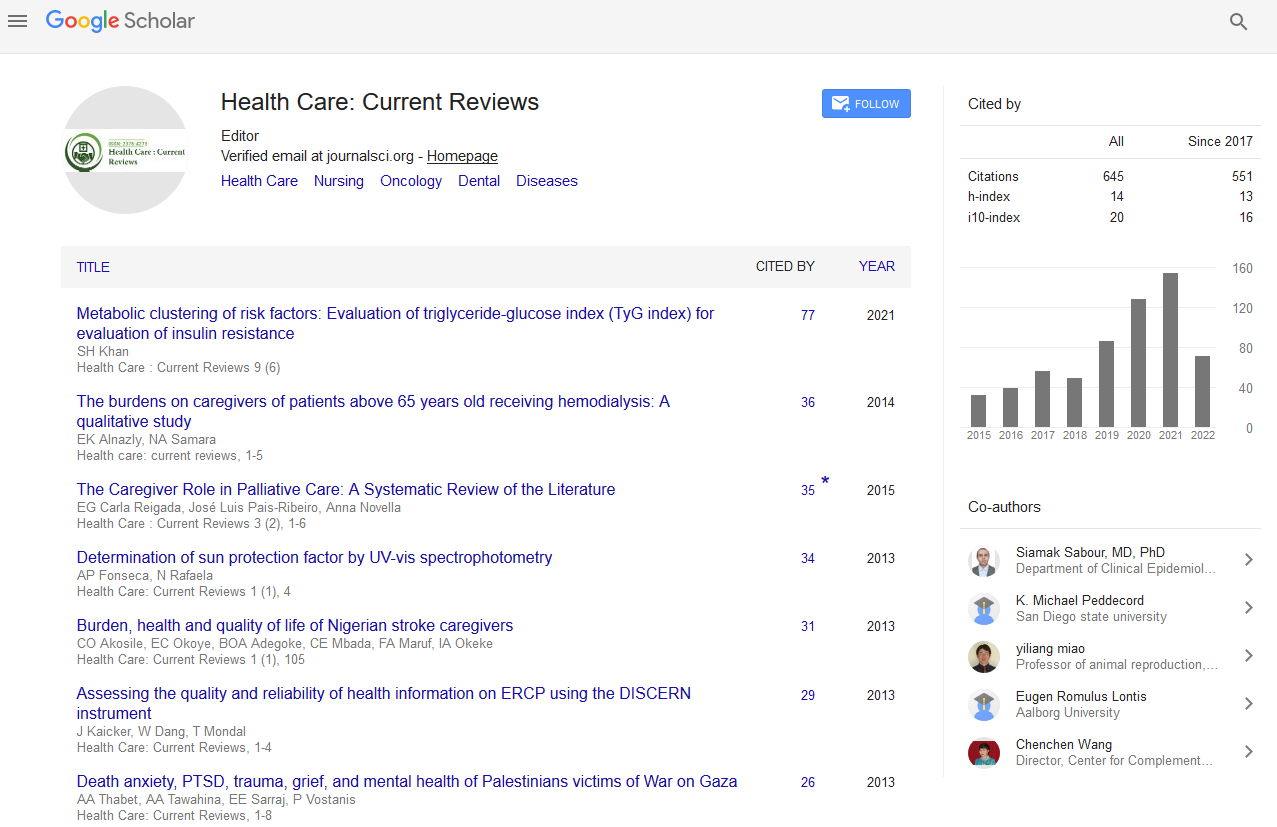PMC/PubMed Indexed Articles
Indexed In
- Open J Gate
- Academic Keys
- RefSeek
- Hamdard University
- EBSCO A-Z
- Publons
- Geneva Foundation for Medical Education and Research
- Google Scholar
Useful Links
Share This Page
Journal Flyer

Open Access Journals
- Agri and Aquaculture
- Biochemistry
- Bioinformatics & Systems Biology
- Business & Management
- Chemistry
- Clinical Sciences
- Engineering
- Food & Nutrition
- General Science
- Genetics & Molecular Biology
- Immunology & Microbiology
- Medical Sciences
- Neuroscience & Psychology
- Nursing & Health Care
- Pharmaceutical Sciences
Abstract
The Monoamine Oxidase Inhibitor Isocarboxazid is a Relevant Treatment Option in Treatment-Resistant Depression-Experience-Based Strategies in Danish Psychiatry
Jens Knud Larsen, Lene Krogh-Nielsen and Kim Brøsen
The clinical use of monoamine oxidase inhibitors (MAOIs) like isocarboxazid nowadays is most often seen with treatment resistant depression, which is in accordance with the registered indication of the National Health Service of Denmark. The clinical use, however, early became restricted and today it covers only a minority of the market for antidepressants. The aim of the present paper is to give a short overview of the clinical efficacy, to review mechanisms of action and metabolism of MAOIs, and to discuss how the side effects and interactions with these drugs may be avoided. A number of clinical trials have documented that MAOIs are effective antidepressants in major depression, including in patients with melancholic syndrome. In Denmark the combined use of nortriptyline with isocarboxazid as add-on treatment for more than 30 years has proved to be safe and efficient. MAOIs must never be combined with SSRIs and serotonergic TCAs. The normal dose of isocarboxazid may cause oedema, which can be treated with a supplement of 100-200 mg pyridoxine (vitamin B6). Isocarboxazid is metabolized by hydrolysis by the liver enzyme carboxylesterase. In contrast to most other antidepressants, the liver enzyme CYP2D6 is not involved in the metabolism of isocarboxazid, which means that it can be used in normal dose for all patients. Treatment with isocarboxazid needs precautions with a number of other drugs and the necessity to avoid certain foodstuffs containing excessive amounts of tyramine. Danish patients being treated with isocarboxazid are recommended to carry along a simple instruction, containing general advice for health personal and a list of foods to avoid. Treatment with isocarboxazid is considered to be a relevant option in treatment-resistant depression and we are today much better prepared than we were many years ago to use the drug in our rational pharmacotherapy.


